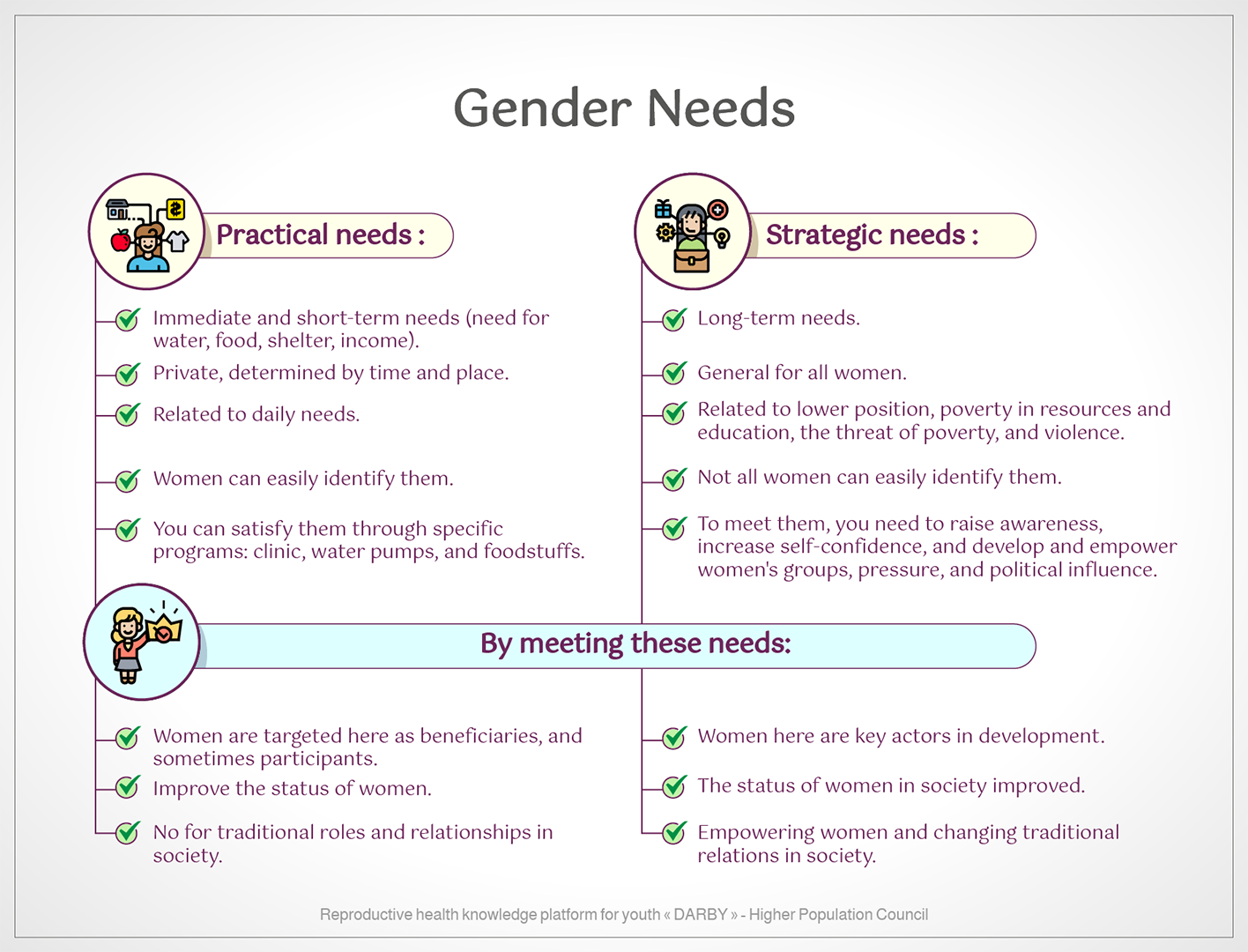Gender Needs
As a result of the different gender roles between men and women, their needs differ and vary. Because development is based primarily on the development of the general surrounding conditions and the means and ways through which individuals meet their needs, the needs from a gender perspective, identifying and clarifying their differences is extremely important.
Gender-specific needs are divided into two main parts:
Practical needs: They are the basic and material needs that should be satisfied by satisfying the basic needs of life, such as the need for food, health, and shelter. These needs are satisfied through specific programs such as the provision of health and education services and loans. Practical needs become practical gender needs if the tasks of meeting them are linked to one gender, meaning that they were the task of women only or the task of men only.
Strategic needs: The needs related to the status of men and women in society and their positions within the power structures of society. These are gender-specific needs that include gender re-division of labor, legal rights, ending domestic violence, equal pay, and rights related to reproductive health.
